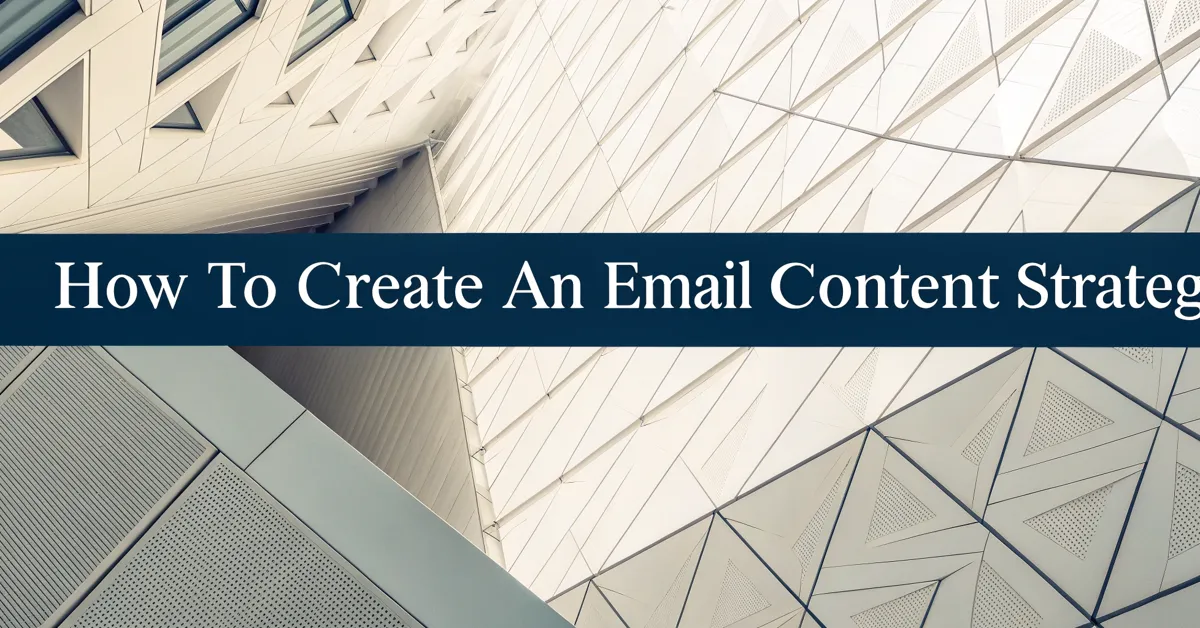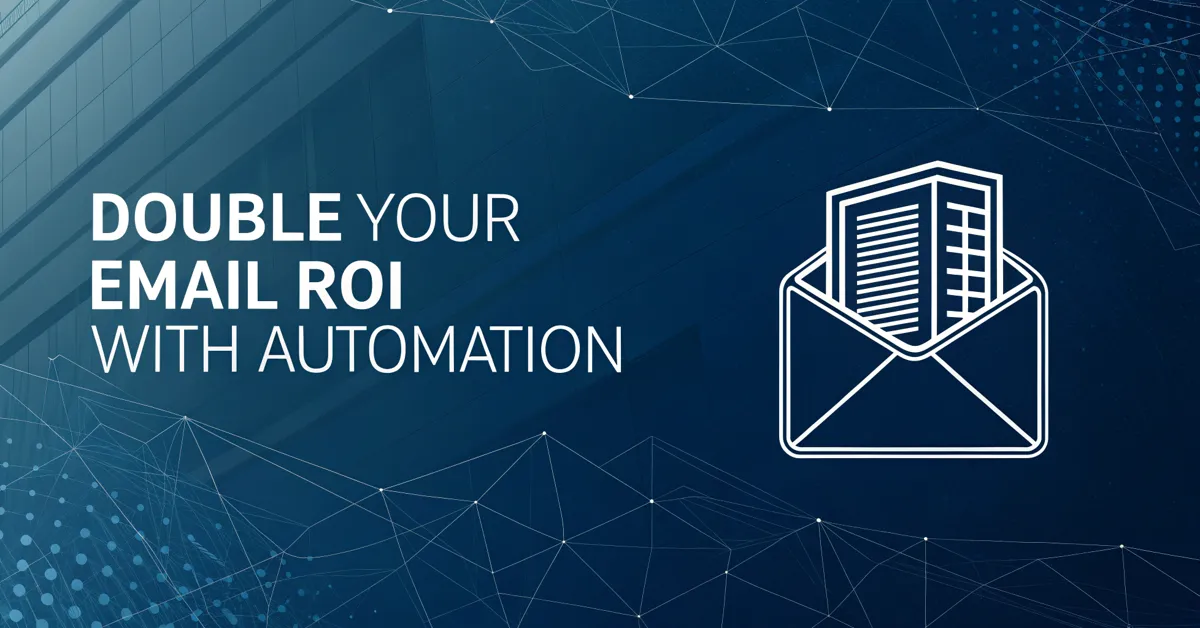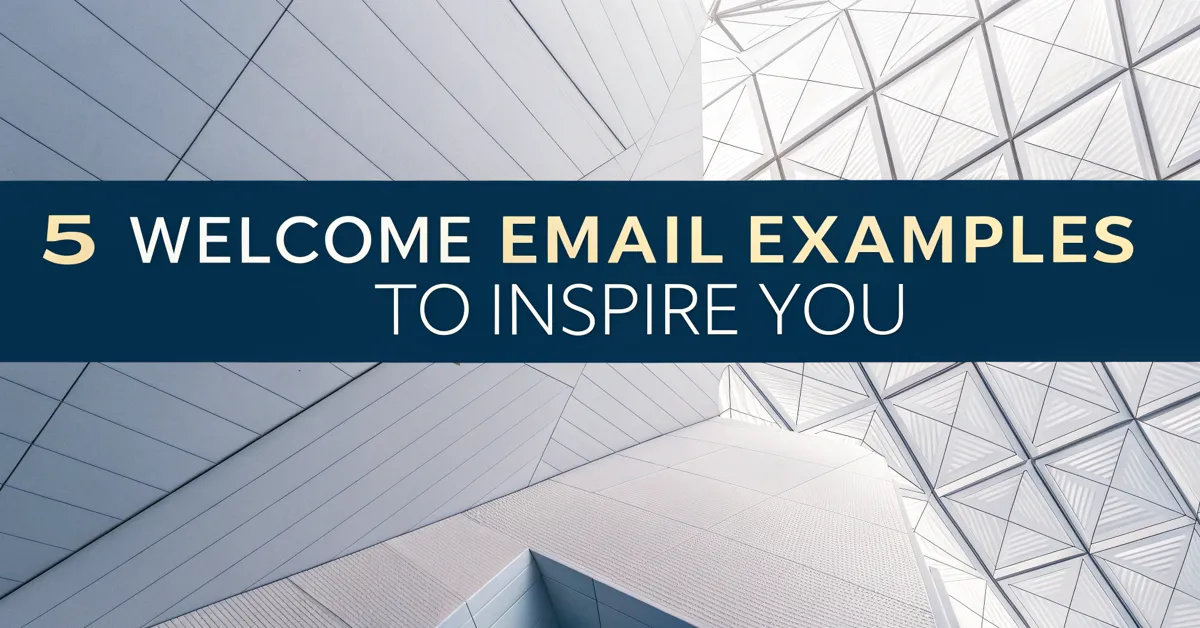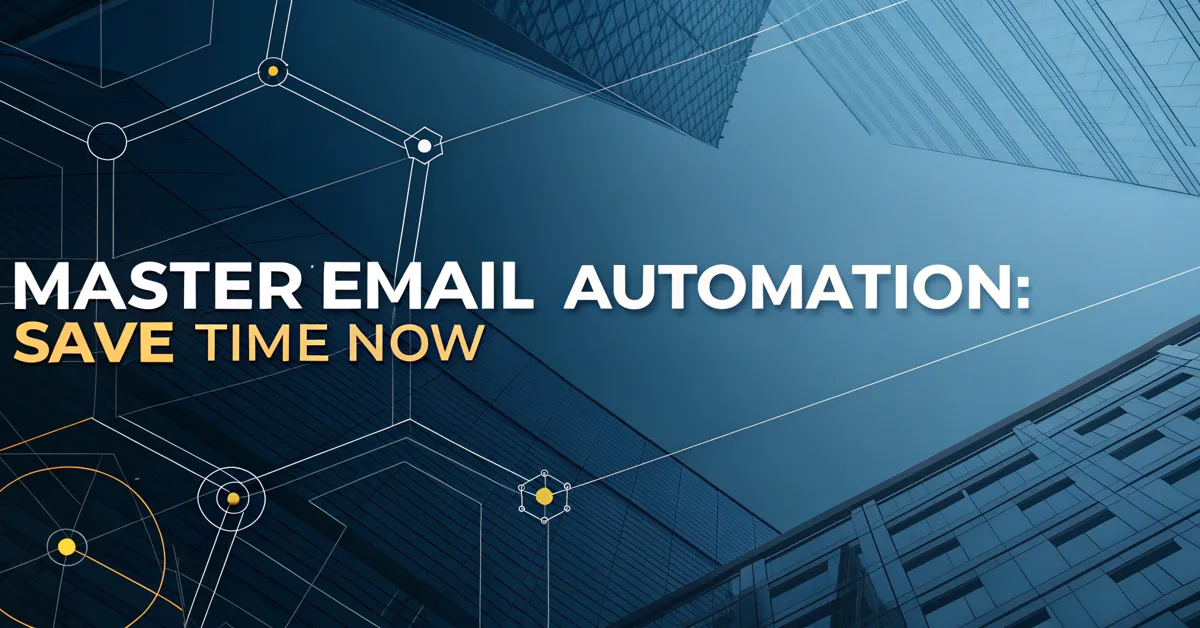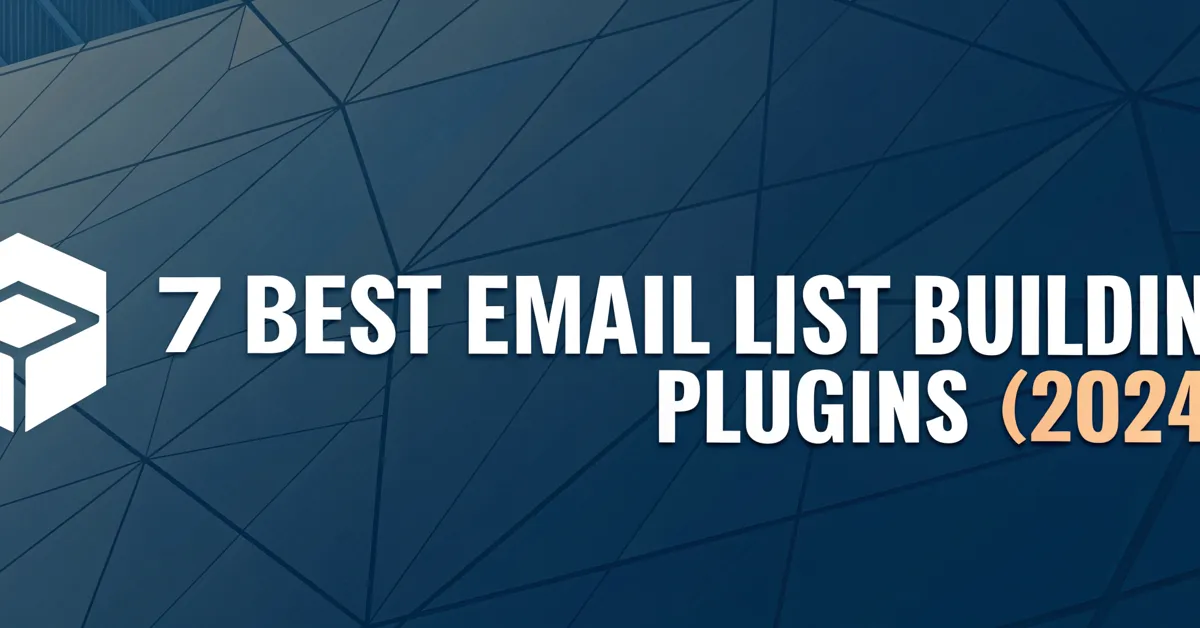It can be tough to make emails that get people to care. You likely send them, and hope someone reads them. But what if you could plan your emails better? What if you had a system to make sure your emails hit the mark? This is where a solid email content plan comes in. You need a clear road map that aligns with your goals and the needs of your audience. This plan keeps you on track. It stops you from sending random, pointless messages. And it lets you send emails that help you grow. Let’s get into how to make a plan that works.
What is an Email Content Strategy?
An email content strategy is a detailed plan. It outlines the types of emails you’ll send to your list. It sets the goals for these emails. And it decides how often you’ll send them. This strategy helps you send the right message to the right person at the right time. It’s not just about sending emails. It’s about making sure each email works toward your goals. A good strategy includes:
- Goals: What do you want to achieve with your emails? More sales? More website visits?
- Audience: Who are you talking to? What are their needs and desires?
- Content: What will you write in your emails? What topics will you cover?
- Timing: When will you send your emails? How often will you email?
- Analysis: How will you track how well your emails do?
With these things in mind, your emails can work smarter. Instead of sending messages that fall flat, you’ll make emails that speak right to your audience, drive them to act, and help grow your brand.
Why Create an Email Content Strategy?
Having a plan for your email content might seem like a lot. But, trust me, it makes a huge difference. Here’s why you should care:
- Boosts Engagement: When you send emails with a plan, you’re more likely to send things people want to read. This means better open rates and click-through rates. The more people like your emails, the more likely they are to buy from you.
- Improves Brand Connection: Sending emails that connect with your audience helps them see your brand in a good light. If people feel like you care about them and understand their needs, they tend to stick around longer and become loyal fans.
- Gets Results: Whether you want more sales, more traffic to your website, or more people at an event, a good email strategy helps you get there. You’re not just sending emails to send them; you’re sending them to get real business results.
- Saves Time: Without a strategy, you’re just guessing what to send each time. This is a waste of time. A strategy gives you a clear path. You know what emails you need to make. This keeps you from last-minute work and makes your whole email process smoother.
- Increases ROI: When your emails get results, they start to pay for themselves. A strong plan helps make sure that every email you send is an asset. This brings more money and saves you more in the long run.
When you skip making a content plan for your emails, you run the risk of sending emails that people ignore. Or worse, emails that make them unsubscribe. A good plan keeps you from those traps. It puts you on a path to send good emails that get the attention they deserve, making a real impact.
How to Create Your Email Content Strategy
Okay, so how do you make your own plan? Follow these steps to set up an email plan that works for your brand.
1. Know Your Audience
Before you type even one word, you must know who you are talking to. You can’t make emails that get results if you don’t know who they are for.
- Ask Questions: Dive deep into your audience. Ask yourself:
- How old are they?
- What jobs do they have?
- What do they like?
- What are their pain points?
- What do they hope to gain?
- What kind of info do they want?
- Look At Data: Check data to learn about your audience. See things like:
- Demographics from your email platform
- Sales info
- Website behavior
- Make Personas: Create a few fake people that speak for your audience. This helps you picture who you are making your emails for. Give them names, a job, what they like. Think of it as if you were making a new friend.
If you know your audience well, it’s like having a secret weapon. You’ll understand what they respond to. This helps you make emails that speak to their needs and grab their attention. When you do this, it’s easier to make content that moves them to act.
2. Set Clear Goals
Your email plan must have goals to work. You need to know what you want each email, and your email plan, to do.
- Specific Goals: Don’t just say “more sales.” Think about it this way:
- Do you want a 10% sales lift?
- Do you want a 20% increase in sign-ups?
- Do you want to boost site traffic by 15%?
- Align With Business Goals: Your email goals must link to your bigger business goals. So, if your company wants more growth, your email goals should help with that. Think of how your emails can push your company ahead.
- Use SMART: Make sure your goals are SMART:
- Specific: Be very clear about what you want to do.
- Measurable: You must be able to track your progress.
- Achievable: Set goals you can meet with the work you have.
- Relevant: Goals must help you reach what your business wants.
- Time-bound: Set when you should reach your goal.
When your goals are clear, your email plans become stronger. They’re not just random. They are focused efforts to get to a goal you’ve set.
3. Plan Your Email Content
Now you know who you are talking to and what you want. Now, you need to plan what to write.
- Brainstorm Ideas: Come up with a bunch of topics that fit your audience and goals. Look at:
- What do people ask you?
- What are your top articles?
- What are the newest trends?
- Mix Content Types: Don’t just send the same kind of email each time. Use different content:
- Newsletters
- Sale emails
- Welcome emails
- Storytelling emails
- How-to emails
- Set a Theme: When you plan emails, try to tie them to a theme or topic for the month. This makes your emails feel more organized and relevant.
When you mix up your email content, it keeps your audience from losing interest. A plan of different kinds of emails makes it more likely your emails will get read. This pushes people to act the way you hope.
4. Create an Email Calendar
An email calendar lets you map out when you’ll send your emails. It keeps you on track. And it stops you from just sending emails whenever.
- Pick a Tool: A simple spreadsheet or a tool, like Google Calendar.
- Set a Schedule: Plan how often you will email. Daily? Weekly? Or less? Find a pace that fits you and your audience. Don’t send too few or too many emails, find a sweet spot.
- Plan In Advance: Map out your emails well ahead of time. This lets you make good emails that meet your goals. It also keeps you from last-minute stress.
If you plan your emails ahead of time on a calendar, you gain control of your plan. It keeps you from making things up as you go. You’re ready to send emails that are thoughtful and timely.
5. Segment Your Email List
Not everyone on your email list wants the same things. That is why you must divide your list into parts. These parts are called segments.
- How to Segment: Segment your list by things like:
- Where they live
- What they like
- What they have bought
- Personalized Content: Send each segment content that they care about. This makes your emails more useful and increases how many people will respond to them.
- Test Results: Always check which segments act more with your emails. Use this to make your future emails even better.
When you send emails that are more focused to groups of people, it’s like speaking directly to each person. This makes your messages far more effective. It leads to higher engagement and higher conversions.
6. Focus on Quality Content
Your emails must have good content. No one cares for junk emails. To have good content is to have messages that your audience will like.
- Be Useful: Give your audience content they find useful and educational. Share tips or things they’d want to know.
- Tell Stories: Stories get people to connect with your brand. People love to hear a good story. Find ways to share your brand’s journey or customer stories in your emails.
- Keep it Simple: Use short sentences and simple words that everyone understands. Do not make things confusing.
- Use Visuals: Add images or videos to your emails to keep readers’ attention. These visuals can also help you say things in a clearer way.
- Make it Easy to Act: Clearly state what you want your reader to do in your emails. Add clear buttons or links that lead them to your goal.
Quality content is the key to getting people to read and act on your emails. If your audience sees that your emails are worth their time, they tend to stick around. They’ll pay attention to your next message.
7. Automate When Possible
Automation is key to doing email well. It lets you send messages at the best times without you having to do it by hand.
- Welcome Emails: Set up a welcome series for anyone who joins your list.
- Abandoned Cart Emails: Remind people about items they left in their cart.
- Birthday Emails: Make your emails more personal by sending them at the right time.
- Trigger Emails: Send emails when your readers take specific steps, like clicking a link or filling a form.
- Test Automations: Track how well your automated emails are doing, and make changes as you need to.
Automation helps you save time and helps you send emails at the perfect time to grab people’s attention. It’s a great way to connect with your audience without having to send each email by hand.
8. Track Your Results
Tracking how well your emails do is key to always getting better. It allows you to see what works and what does not.
- Track These Metrics: Track things such as:
- Open rate
- Click-through rate
- Conversion rate
- Unsubscribe rate
- Use Data: Use data to make better decisions about your future emails. What are the types of emails that get the most clicks? What do people ignore?
- Make Changes: Use what you learn to fine-tune your plan. Test different content. See what makes a difference. Then stick with what works.
Tracking gives you the insight you need to make your email plan even better. When you test and check what’s going on, you learn what gets people to act. This helps you improve over time.
9. Stay Compliant
Following all rules and laws for email marketing keeps you from any legal problems and helps you build trust with your audience.
- Follow CAN-SPAM: For those in the United States, adhere to the CAN-SPAM Act rules:
- Give your business address.
- Make it easy for people to stop getting your emails.
- Make sure your emails are honest.
- Follow GDPR: For people in Europe, the GDPR rule says that you need a reason to keep sending emails to people.
- Get people’s permission to send emails.
- Tell them why you are keeping their email.
- Let them see what info you have about them.
- Use a Good Provider: Make sure your email marketing provider is a trusted brand that respects privacy and follows rules.
- Keep Your Lists Clean: Clean out inactive emails to make sure you are not sending messages to people who don’t want them.
When you follow all laws and rules, it shows your audience that you are a safe and honest brand. It makes them feel more at ease when they get emails from you.
10. Keep Testing and Improving
An email plan is not a set-it-and-forget-it kind of thing. You have to keep working on it to make it better.
- A/B Testing: Test different parts of your emails, like the subject line, text, or images.
- Check the Data: See what works and what does not. Then change your plan to get better results.
- Keep Learning: Things always change. So you must always learn about new tricks or advice to keep up with the newest trends.
- Ask Your Audience: Find out from your audience what they’d like to see in your emails. Ask them directly or use surveys.
If you stay hungry to learn and improve, you keep your email plan on the cutting edge. This helps your emails stay relevant. It gets them to always grab people’s attention and push them to action.
Examples of Email Content Strategies
Let’s look at a few real-world examples of how you can put your email content plan into action:
- E-commerce Brand: A clothing brand might send:
- Welcome email for new sign-ups.
- Emails with new items.
- Emails with sales and deals.
- Emails for items in the abandoned carts.
- Emails for birthdays.
- Service-Based Business: A graphic design firm might:
- Send out a newsletter with advice.
- Send emails about the newest projects.
- Send sale emails with discounts for their service.
- Send welcome emails with new clients.
- Send emails asking for feedback from older clients.
- Non-profit Organization: A charity might send:
- Emails that explain what the company is about.
- Emails with stories that show the impact they make.
- Emails asking people to help with donations.
- Emails that say thank you to past donors.
- Emails that update people on the progress.
- Blog or Content Website:
- Send a weekly email with links to their best stories.
- Send emails with the latest trends in their industry.
- Send a short email with just one important story.
- Send emails that lead people to the content they care about.
- Send emails with questions asking people what kind of content they want to see.
These are just a few ideas. How your email strategy works for you must match your brand’s needs and the needs of your audience.
Tools to Help You Create Your Email Content Strategy
There are a lot of tools out there to help you make and carry out your email plans. Some of these include:
- Email Marketing Platforms: Tools like Mailchimp, ConvertKit, or Constant Contact are great for making and sending emails. They also help you handle your lists, automate, and track results.
- Analytics Tools: Google Analytics lets you see how your emails send people to your website. This helps you see how well your emails perform.
- Scheduling Tools: Tools like Google Calendar or Trello can help you map out your email schedule. They can also keep your team on the same page.
- Survey Tools: Tools like SurveyMonkey or Typeform help you learn what your audience likes. Use these to find out what they want in your emails.
- A/B Testing Tools: Most email platforms have A/B testing tools to test different things in your emails. Use these to find what really gets people to act.
- Content Planning Tools: Tools like Notion or Asana help you plan the content of your emails. They also keep your team from going out of line.
These tools are like having a helpful team member for your email plan. They keep you on track, give you data, and free up your time so you can focus on other things.
How an Email Content Strategy Improves Your Overall Marketing
A good email plan does not only boost your email results. It also helps your whole marketing plan. Here are a few ways how:
- Works With Other Plans: A great email plan should go hand-in-hand with your social media, content, and sales plans.
- Gives a Better Customer Path: If you send the right emails, you can guide people along a path. From getting to know your brand to becoming loyal customers.
- More Customer Loyalty: Email is a good way to keep in touch with your audience and build a strong bond over time. This bond can lead to higher loyalty.
- Boosts Leads: Your emails can be a good way to bring people to your sales pages. You can also use emails to find new leads.
- Better Brand Story: If your emails share your story, or the story of your clients, you show that you care more about things than just sales. This can strengthen your brand’s voice.
When email is a part of your whole marketing plan, it helps each part become more powerful. All the parts work together to bring you more business, more people, and a more powerful brand.
The Future of Email Content Strategies
Email marketing is always changing. So you must always stay aware of the newest trends and tricks. Here are some things to look out for in the future:
- More Personal Emails: People expect more and more emails to be made just for them. Use data to make your emails match each user’s needs.
- AI and Automation: AI can help you write emails, send them, and track how well they work.
- Interactive Content: Look for ways to use interactive content in your emails. This makes people stay on the email for longer.
- Better Privacy: People care more about privacy. So, be very clear and honest about how you use data.
- More Visuals: Images and videos grab attention better. Find new ways to use visuals in your emails.
If you stay ahead of the curve with email, you’ll get a leg up over others. You’ll be ready to connect with your audience in ways that are new and useful.
Is it Time to Plan Your Emails?
Making an email content strategy is a must-do for anyone who wants to do good email marketing. It’s a way to stop just sending out random emails and start sending ones that matter. If you take the time to plan, you can build deeper bonds, get better results, and improve your brand. So, make a plan, follow the steps, and watch how your emails become a powerful tool to help you grow.
